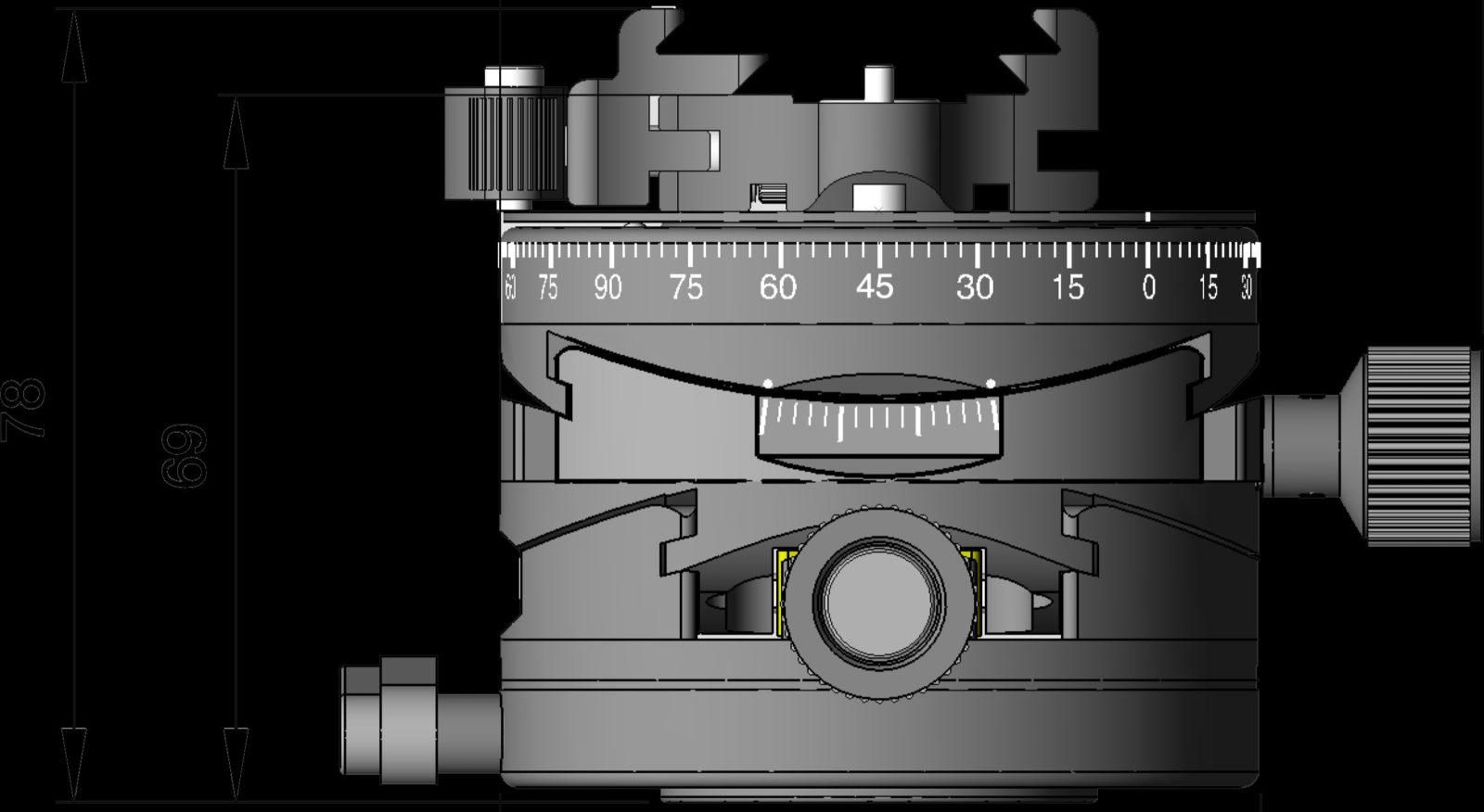Gear Testing, Hardware, Tech Tips
Arca Swiss Heads – The Essential Primer
Arca Swiss is the gold standard of tripod heads and quick release systems. Their design prowess so well regarded by all in the industry that most high-quality tripod heads, and many high-quality cameras, are manufactured explicitly to conform to the Arca Swiss standard dovetail (an “Arca Swiss style quick release”). But while many companies adhere to the size/shape of their heads, nobody else can claim the same level of precision, fit and finish, and utility of the heads and quick releases they make. A tripod head is an investment – high quality heads will last decades – so why not invest in the best?
Arca Swiss Tripod Head Comparison Chart
| L60 | L75 | Cube | Cube GP | D4 | D4 Geared | D4 Geared GP | P0 | P1 | P0 Hybrid | |
| WEIGHTS/SIZES | ||||||||||
| Weight | 1.0 lbs | 1.4 lbs | 2.3 lbs | 2.3 lbs | 1.5 lbs | 2.1 lbs | 2.1 lbs | 0.9 lbs | 1.3 lbs | 1.1 lbs |
| Height | 3.3” | 3.8” | 4.2” | 4.3” | 3.5” | 4.3” | 4.4” | 2.9” | 3.6” | 4.9” |
| Carrying Capacity | 44 lbs | 66 lbs | 88 lbs | 88 lbs | 75 lbs | 75 lbs | 75 lbs | 44 lbs | 66 lbs | 44 lbs |
| FEATURES | ||||||||||
| Quick Release | Yes | Yes | Yes | Yes | Yes | Yes | Yes | Yes | Yes | Yes |
| Self-Arresting Gearing | Yes | Yes | Yes | Yes | N/A | Yes | Yes | N/A | N/A | Yes |
| Backlash Free | Yes | Yes | Yes | Yes | N/A | Yes | Yes | N/A | N/A | Yes |
| Slop-Free Locks | N/A | N/A | N/A | N/A | Yes | Yes | Yes | Yes | Yes | Yes |
| Clutched Gearing | No | No | No | No | No | Yes | Yes | No | No | No |
| Aspheric Ball | N/A | N/A | N/A | N/A | N/A | N/A | N/A | Yes | Yes | Yes |
| In-Curve Tilt | Yes | Yes | Yes | Yes | No | No | No | No | No | Yes |
| MOVEMENT | ||||||||||
| Left/Right Tilt | +/- 10º | +/- 15º | +/- 30º | +/- 30º | +/- 40º | +/- 40º | +/- 40º | +/- 90º | +/- 35º | +/- 100º |
| Forward/Back Tilt | +/- 10º | +/- 15º | +/- 30º | +/- 30º | 40/90º | 40/90º | 40/90º | +/- 90º | +/- 35º | +/- 100º |
| Allows 90º Tilt | No | No | Yes | Yes | Yes | Yes | Yes | Yes | Yes | Yes |
| Bottom Pan | Manual | Manual | Manual | Manual | Manual | Manual | Manual | Ball | Ball | Ball |
| Top Pan | Manual | Manual | Manual | Geared | Manual | Geared | Geared | Manual | Manual | Manual |
| SERVICE/SUPPORT | ||||||||||
| Fast US Repairs | Yes | Yes | Yes | Yes | Yes | Yes | Yes | Yes | Yes | Yes |
| Custom Detents | Yes | Yes | Yes | Yes | Yes | Yes | Yes | Yes | Yes | Yes |
| DT ESTORE LINKS | ||||||||||
| Classic | Buy | Buy | Buy | Buy | Buy | Buy | Buy | Buy | Buy | Buy |
| Fliplock | Buy | Buy | Buy | Buy | Buy | Buy | Buy | Buy | Buy | Buy |
The Arca Advantages (i.e. Glossary of Features)
Strong Carrying Capacity; Conservatively Spec’d
There is no universally accepted standard for how to measure the “carrying capacity” or “holding power” of a tripod head. Part of that is because it’s relatively unimportant how heavy the camera is, compared to where/how that weight is distributed. For example, if you have a very long lens mounted, the total weight of the camera and lens may not be that heavy, but most of that weight is “dangling” far off of the center of the tripod, which creates a levered force that is far more challenging for the head to hold than the same weight perfectly centered. Additionally, tripod manufactures themselves are free to claim whatever carrying capacity they want; unlike, for example, miles-per-gallon in the car industry, there is no central agency or law that tests and confirms these claims. As a result, many tripod head manufacturers will list that their head can hold a “X lbs” camera when practical experience will show you that it really cannot. Arca Swiss has a very conservative engineering mentality of under-promise-and-over-deliver. In addition, the Arca Swiss heads that use “In-Curve Movements” keep the weight centered over the tripod even with larger movements. They also use top quality materials, high-precision manufacturing, and strict quality control processes. So when Arca Swiss states a spec of, for example, 44 pound carrying capacity, you can be sure it will hold a camera of that weight with more stability and precision than most any head with the “same” specification.
Dovetail Quick Release
The ease, speed, safety, and precision of the Arca Swiss Dovetail design is so strong that most of the rest of the industry has copied it (in many cases, quite poorly). Any camera with an Arca Swiss Compatible Dovetail can mount into an Arca Swiss Head (see “MonoballFix” and “Non-Standard Plates” below for sort-of exceptions). The head itself provides two “safety pins” that protects rail-based cameras from sliding off the end of the head, even when loosened.
Some cameras, especially high-end cameras, now come with an Arca Swiss Compatible Dovetail integrated into the chassis of the camera. This is the case for all Arca Swiss cameras, most Cambo cameras, and the Phase One XT. For those cameras, not even a separate quick release plate is required; the camera natively nestles into any Arca Swiss head.
When it comes to tightening the dovetail receiver Arca Swiss provides two main options, and one obscure one:
- Fliplock: This is a two-stage release which is lighter, and more compact than the Classic knob. Because it requires two operations to release, it is more secure against accidental removal. The downside of this design is that it’s slightly slower to remove the camera, and if anyone else interacts with your camera (assistants, other photographers, family members etc) you will have to show them how it works. Because the Fliplock comes to a final-resting position when locked, all Fliplocks include an integrated adjustment gear that increases or decreases the width, allowing it to deal with “Non-Standard Plates” (see below).
- Classic Knob: This is a straight forward knob. It is slightly larger and heaver than the Fliplock, but it’s immediately obvious how it works.
Most of our users prefer the “Classic” knob for its simplicity, but the Fliplock has a special place in our hearts as an elegant solution that illustrates Arca’s down-to-the-last-detail design.
Self-Arresting Gearing
If you’ve never used an Arca Swiss head with self-arresting geared movement before it’s hard to believe the following: most Arca Swiss heads do not require locking/unlocking; they just stay in whatever position you leave them. In fact, many Arca Swiss heads do not even have a lock, because their movement is fully self-arresting. In short, if you want to angle the camera up, down, left, or right, you can simply turn the knob to do so, without need to unlock and lock any mechanism. It’s one of the quality of life features that makes Arca Swiss users fanatics.
Backlash-Free Gearing
On many cheaper heads the gears exhibit bad backlash; that is, when changing directions on the knob there’s a gap of slack before the gear re-engages in the new direction. Thanks to extremely well-designed gears and tight manufacturing tolerances, Arca Swiss knobs have no backlash and are totally exacting in their precision. This is especially important when you’re trying to hone in a very specific position (e.g. leveling the camera using the precision digital level in a Phase One IQ4 back.
Slop-Free Locks
On most other tripod heads the action of locking the tripod head results in a final movement. With Arca Swiss heads this is not the case; most Arca heads do not require locking (see “Self-arresting geared movement” above), and the ones with locking mechanisms do not move as they are locked. Moreover the gearing on all Arca Swiss heads feel great.
Clutched Gearing
The traditional trade off in tripod head design is between the precision of gearing and the speed of free movement. Arca Swiss makes several heads that are a hybrid of the two, offering the best of both. These heads offer “clutched” gearing; when the clutch is engaged the movement is fully geared (with self-arresting movement and precise back-lash free knobs), but when the clutch is disengaged the movement is freed for fast, gear-free adjustment.
Aspheric Ballhead Balls
On a traditional ballhead the shape of the ball is perfectly spherical. That means that as you move the camera further from the top-center of the ballhead gravity has more effect, leading to less comfortable use, and constant adjustment of the tension knob (which will always be too tight at the top or too loose at the bottom). Arca Swiss takes the effort to manufacture the P0 line of ballheads with an Aspherically-shaped ball, which keeps the movement smooth and equal throughout most of the range of the head. It’s surprisingly hard to machine metal into a high-precision aspherical shape, which explains why most cheaper ballheads are not made this way. But once you’ve used such an aspheric ballhead it’s very hard to go back.
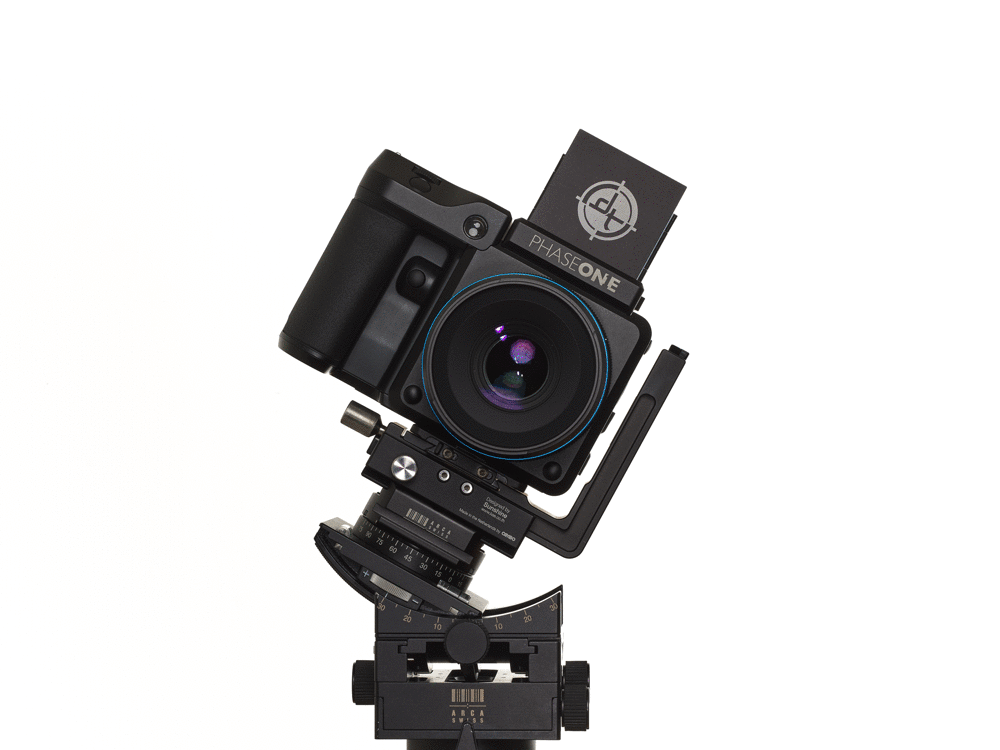
In-Curve Tilt
Arca Swiss makes several tripods that feature a unique curved movement for adjusting horizon (left-right tilt) and pitch (forward-backward tilt). Because the movement occurs within a curve the composition and focus point of the camera remain far more stable than in tripod heads where these movements “plop” the camera at the end of a lever, forcing it far off center. By keeping the mass of the camera centered over the tripod head the entire system (camera+head+tripod) remains far more stable, allowing you to use more compact tripod legs for any given required level of stability.
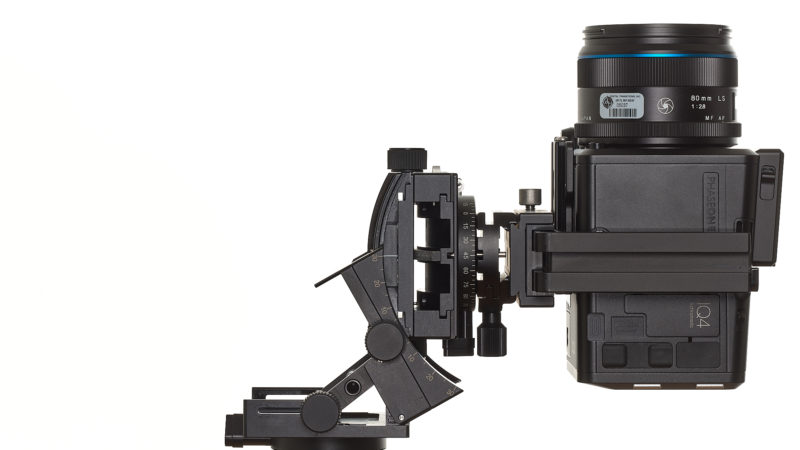
Allows 90º Tilt
Many Arca Swiss heads natively allow the camera to be tilt all the way to 90º, without the need for special adapters. This allows any camera to be oriented vertically, or to be pointed straight up or down, for example, to shoot ceilings or to shoot down a stairwell.
Custom Detenting
Digital Transitions can deliver most Arca Swiss heads with custom detents on the top pan. For example, a panoramic shooter may want to have detents every 30 degrees, while an architectural photographer may want to have only detents at 180 degrees (to allow the camera to be rotated toward the user to change lenses or filters, and then rotated back precisely to the same composition). Simply send an email to info@digitaltransitions.com with your custom detent request, at the same time as you place your order via our eShop, or contact your DT sales rep for more information.
The Arca Swiss Tripod Lineup, In Detail

Arca Swiss Cube Line
The Arca Swiss Cube brought the concept of “In-Curve Movement” to the world of tripod heads. For many photographers this is “THE Tripod Head.” It provides a wide range of adjustability, rock solid holding power, and the ability to orient the camera vertically (without an L bracket) and/or point the camera straight up or straight down. If budget allows, if the size/weight is not bothersome, and you don’t need rapid subject tracking (e.g. what a ball head provides) then there is no better tripod head in the world. Despite being Arca Swiss’ most expensive tripod head, the Cube is the head we sell more of than any other. In all the years we’ve sold it, we can’t think of a single client who expressed any disappointment upon receiving it. Be warned though: the Cube will spoil you!
- Arca Swiss Cube [classic / fliplock]: The classic cube with geared movements for left-right and forward-backward movements, but manual-only movement for the top pan rotation.
- Arca Swiss Cube GP [classic / fliplock]: The GP stands for Geared Pan and provides the ability to rotated the top pan movement with a gear. The panned gearing can be quickly uncoupled, allowing totally free rotation, for cases where speed is more important than precision.
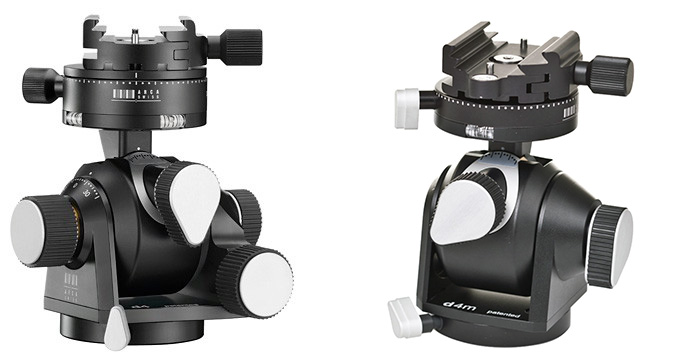
Arca Swiss D4 Line
The D4 combines the fast adjustability of a ball-head with the independent axis control of a 3-way pan-tilt head. In the case of the Geared version of the head, it also has the precision of geared adjustability. For most users the precision feeling of the gearing (of the D4 Geared or D4 Geared GP) will be well worth the extra cost, especially since it is a clutch-able gearing that can be quickly disengaged for rapid ball-head like movement.
- Arca Swiss D4 [classic / fliplock]: The basic model sometimes referred to as the D4M or D4 Manual. No geared adjustments (neither for left-right, nor fore-aft, nor top pan).
- Arca Swiss D4 Geared [classic / fliplock]: The same as the D4 Manual, except the left-right and fore-aft movements are geared.
- Arca Swiss D4 Geared GP [classic / fliplock]: All the bells, all the whistles. The same as the D4 Geared, but the top pan movement is also geared (GP stands for Geared Pan).
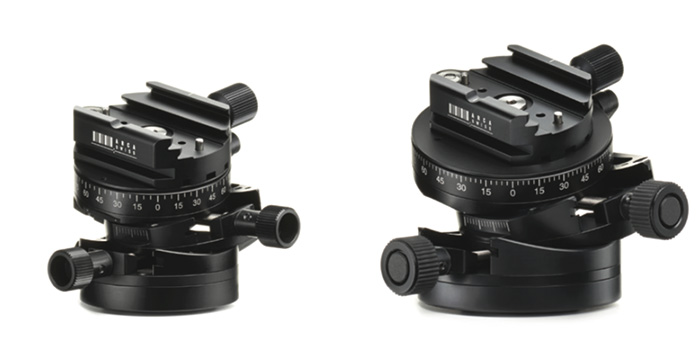
Arca Swiss Leveler Line (L60 and L75)
Referred to Arca Swiss as their “Core Leveler” line these two heads offer much (but not all) of the advantage of an Arca Swiss Cube, in a significantly smaller (and less expensive) package. Compared to the cube, they have a smaller range of movement (10º for the L60 and 15º for the L75) but that movement, like the cube, is within a curve, reducing recomposition after leveling the camera or making horizon/pitch adjustments. The reduced range of adjustment is why Arca Swiss prefers to refer to these as “Levelers” rather than “Tripod Heads” but the distinction is arbitrary.
The L60 and L75 are especially attractive for those that are using cameras with built in rise/fall movement. It is rare that such cameras will need to be pitched forward or backward very far, since “looking up” within the composition will typically be accomplished using the optical rise/fall movement of the camera. So, for example, those using the Phase One XT Field Camera to shoot landscape will find the camera itself handles most movement, and therefore the L60 or L75’s limited range of movement (10º and 15º respectively) are not a problem, and the reduction in weight (compared to an Arca Swiss Cube or Cube GP) are very welcome. The L75 also has a retracting knob design that allows easier access to the knob throughout the 15º movement range.
- Arca Swiss L60 [classic / fliplock]: The smaller of the two levelers, with a range of +/-10º and a carrying capacity of 44 lbs
- Arca Swiss L75 [classic / fliplock]: The larger of the two levelers, with a range of +/-15º and a carrying capacity of 66 lbs.
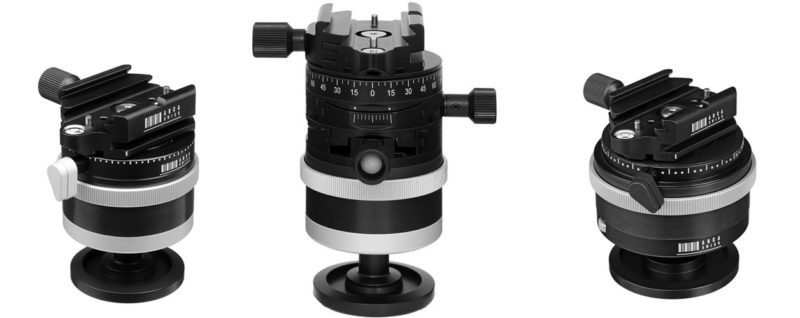
Arca Swiss P Line
The P series is an “upside-down ball head” design that offers two advantages compared to traditional ball heads: form factor, and locking method. The form factor of the P line is very small and light, given its range of movement and carrying capacity. For example, the P0 basic model is under 0.9 lbs but still provides a carrying capacity of 44 pounds and the option for a full 90º tilt. The locking method of the P0 both makes for faster and easier one-handed operation and makes the head more compact (since no knob sticks out from the side); gripping the head your fingers are natively wrapped around the lock meaning you can twist to unlock and relock the movements without changing your grip. The P has several heads:
- Arca Swiss P0 [classic / fliplock]: The basic model. Best when weight/size are the top priority.
- Arca Swiss P1 [classic / fliplock]: Like the P0, but beefier and able to handle a larger load. The P1 also lacks the ability to tilt to 90º.
- Arca Swiss P0 Hybrid [classic / fliplock]: A P0 with an integrated L60 Leveler. This is a great (and highly compact) geared/ball hybrid head.
The use case for the P0 Hybrid deserves a bit more discussion. Say you shoot frequently in rough terrain; you may find yourself with one tripod leg jammed into a crack in a rock wall, another leg balanced on the top of a fallen tree, and the third leg on flat ground. In such cases the center column may be more than 10º off-axis, so the range of the L60 would not be, by itself, enough to level the camera, let alone provide flexibility in all directions once leveled. The P0 Hybrid can use its ballhead to get roughly level, and the geared mechanisms to fine tune. Alternatively the ballhead can be used for fast/fluid movement (e.g. to track moving subjects) and the gearing for precise adjustments, allowing the P0 to serve in a wide range of duties. In this way the P0 Hybrid is similar to the D4 Geared head, but smaller and more compact.
Other Notes and Facts
“Quickset” vs “Quick Release”
Arca Swiss is a European company that has been doing their thing for so long that they, in some cases, use wording or terminology that is no longer the generally-used terminology. One example is their use of the term “quickset” vs “quick release”. The latter is the term most modern photographers in the US would refer to the plate that you attach to a camera to facilitate its fast and easy mounting to a tripod head. The former is what Arca Swiss uses. They mean the same thing, and no distinction is meant between them. In fact, DT, in our listings of Arca Swiss heads and plates, replace Arca’s use of “quickset” with “quick release” for clarity, as we think our clients will more readily understand that term.
Non-Standard Plates
Arca Swiss itself defined the “Arca Swiss Dovetail Standard” over five decades ago, and has strictly adhered to that standard with extreme precision, without fail. That is, the width of every single quick release plate that Arca Swiss has manufactured is within a small fraction of a millimeter of any other plate Arca Swiss has ever manufactured. The standard, in other words, is clear, unambiguous, and continuous over time. However, when it comes to plates made by third parties all bets are off; even plates clearly labeled “Arca Swiss Compatible”. Whether the discussion is about a cheap plate made by a cheap brand, or a high-quality plate made by brands like Really Right Stuff, the exact size of the plate may vary. In some cases, other companies have very precisely and consistently made their plates other-than-to-the-Arca-Swiss Standard. In most cases, small variations will not matter. The Classic Knob (see above) can tighten on plates that are slightly larger than expected, and the Fliplock can be adjusted to slightly wider or narrower distances. The main issue comes when using the Fliplock with a MIX of different plates, only some of which are too large or too small. In that case, switching from a larger to smaller plate can lead to an insecure clamp, and switching from a smaller plate to the larger can lead to a clamp that will not fully tighten/engage. This is one reason to go with the Classic Knob: it easily accommodates a variety of plates, including those that are not strictly compliant with the Arca Swiss Standard.
MonoballFix (aka the Skinny Arca Swiss Dovetail)
Throughout this page we have referred to the Arca Swiss Dovetail or to Arca Swiss Compatible Tripod Mount. In fact, there is both a “large” and “small” Arca Swiss Dovetail. The larger dovetail is, by far, the most common. However, Arca Swiss established a smaller dovetail standard for applications where the size of the larger dovetail was impractical or undesirable. For example the Arca Swiss R Series uses the smaller dovetail, as do their view cameras such as the Arca Swiss Factum. Arca Swiss itself calls the larger dovetail the “Arca Swiss Classic Dovetail” and the smaller dovetail the “Arca Swiss MonoballFix Dovetail” (and often use the word “Quickset” in conjuction with either, which, as described above, just means “quick release”). In almost all cases third parties, such as Really Right Stuff or Kirk Enterprises, are creating heads and plates that conform (more or less; see “non-standard plates” above) to the larger “Arca Swiss Classic Dovetail”. If you have a camera with the smaller Arca Swiss MonoballFix Dovetail you can use an adapter to step up to the larger dovetail size; this adapter is called the “Adapter MonoballFix to FlipLock & Classic Quick set device.”
If you’re unsure which Arca Swiss Dovetail you have, you probably have the classic dovetail. DT does not list the MonoballFix heads on our website as we’ve found they confuse many potential buyers who are only familiar with the larger dovetail. But of course, we sell the entire line of Arca Swiss products; Contact Us to order an Arca Swiss head in the Monoball Fix style.
Most Arca Swiss Heads (all current-era heads not ordered in the Monoball Fix style) have channels for BOTH the larger and smaller dovetail size, making it arbitrarily easy to use either dovetail with an Arca Swiss made head.
Stil confused? See the graphics below.
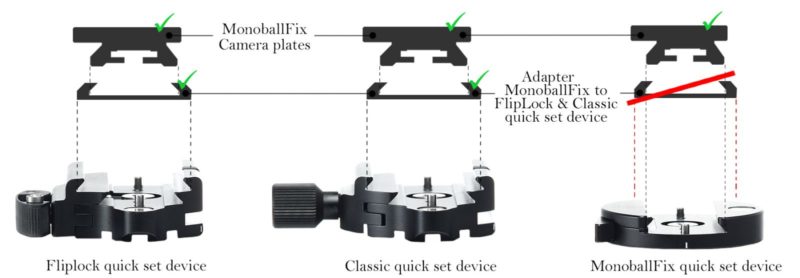


Simple, Safe, Fast, Head Mounting
Arca Swiss makes a genius accessory called the Quicklink that allows the tripod head itself to quickly and easily be mounted and unmounted from the tripod. The Quicklink is light weight and low in footprint, but adding it to your kit makes it far easier to travel with a larger tripod head like the Arca Swiss Cube or Arca Swiss D4 which may need to be removed from the tripod to fit inside a bag, or to reduce wear/tear on the head as you travel to a location.

